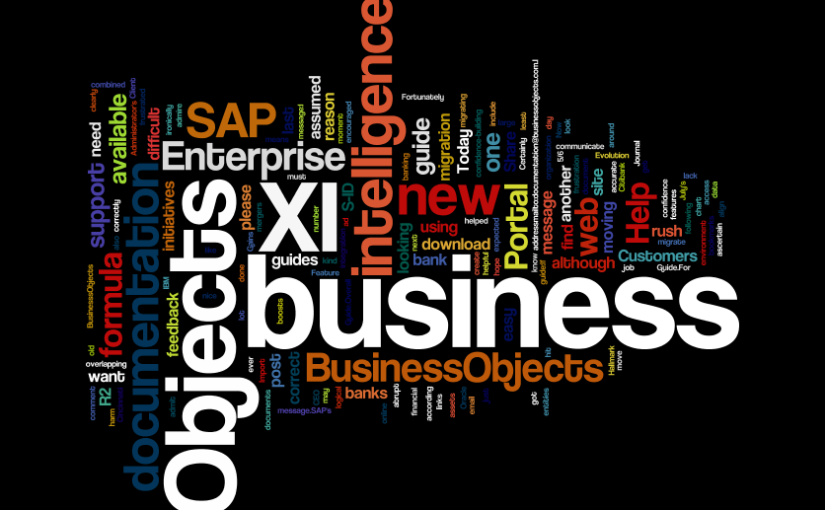Updated August 1, 2012
I recently stumbled across this nifty Business Intelligence timeline on the Business Objects web site. It dates back to 3500 BC and the Sumerians. Somebody put a lot of thought into the timeline, even including extensive footnotes. The timeline marks some interesting developments in human history, not to mention Business Objects history – developments like Business Objects 4.0, which shipped in 1996. Business Objects 4.0 was the first version of Business Objects to incorporate the Supervisor administrator application.
I have my own Business Intelligence timeline, although it is much shorter – beginning in February 2003 when I started using Business Objects 5i. Supervisor was replaced in November 2004 by the Business Objects XI Release 1 Central Management Console, or CMC. Like many of you, I learned Supervisor only to have to relearn the CMC. The CMC was simply a rebranded Crystal Management Console from Crystal Enterprise 10. And although Business Objects XI was the 3rd iteration of the CMC, it lacked certain capabilities and refinement.
Supervisor had its own issues, but we were comfortable. Many of us were bitter when XI shipped, clinging to our guns and Supervisor. And just when many administrators are finally getting comfortable with the XI R2 CMC, we must change once again to adopt Business Objects Enterprise XI 3.0.
Business Objects Enterprise XI 3.0 shipped in March 2008 with a completely redesigned CMC. There were many reasons to undertake a redesign. On the architecture side, previous versions of the CMC relied on Crystal Web Requests (CWR), which have been depreciated. The Web Component Adapter (WCA) that supported CWR’s is no longer present in the XI 3.0 architecture. On the user side, the CMC worked well with single objects (users, folders, etc.), but didn’t make administrators very efficient working with multiple objects. Advanced rights were a pain to setup and manage. Some security situations were tricky to resolve without breaking inheritance rules. And the tools for diagnosing security issues still required a lot of Sherlock Holmes-style detective work by an administrator.
Business Objects Enterprise XI 3.0 contains many architectural and user-centric improvements. As I continue to use the product, I see that many of the changes are actually in response to feature enhancements requested by users. So we are partially to blame. Fortunately, many of the underlying security rules in XI R2 are still valid – they just come in a bright shiny new package.
I’ll be discussing the new CMC this October at the GBN Business Objects User Conference 2008 in Dallas, Texas (visit my Presentations page).
What’s on your Business Intelligence timeline?
UPDATE (August 1, 2012): GBN is now part of ASUG, the America’s SAP User Group. Thanks to Sandor de Heij for finding the original timeline in the Web Archive’s Wayback Machine. Upon closer inspection, it looks like Business Objects cited most of their timeline from A Brief History of Decision Support Systems by D. J. Power.




Unlike you Dallas, I was lucky enough to come from the Crystal Decisions side, so when it came time to learn Business Objects XI, I was a step ahead as I knew Crystal Enterprise v9/10. However, become a Migration Specialist took a bit of work, as I had to learn BO6.5 from scratch!
First version of Crystal I used was v8, so my BI timeline is only 7 years long… =)
– Josh
Your readers might find this history of the BI market a little more entertaining:
It’s nice to see that people are still referring to which side of the acquisition they came from. Is there now an “SAP-classic”?
I'm a little sad that the BI timeline got lost when the Business Objects web site was decommissioned and rolled into SAP's web site.
Thanks Dallas. I’ve just spent a good hour looking for this timeline. I remembered it because I was trying to explain to the designers from the brand company I’m doing business with what BI is all about. With a little help from the Wayback Machine it’s still viewable here: http://web.archive.org/web/20081114223920/http://www.businessobjects.com/businessintelligence/timeline.asp
Sandor, thanks for finding this. It never occurred to me to check the archive. Some fantastic research that you’ve uncovered.